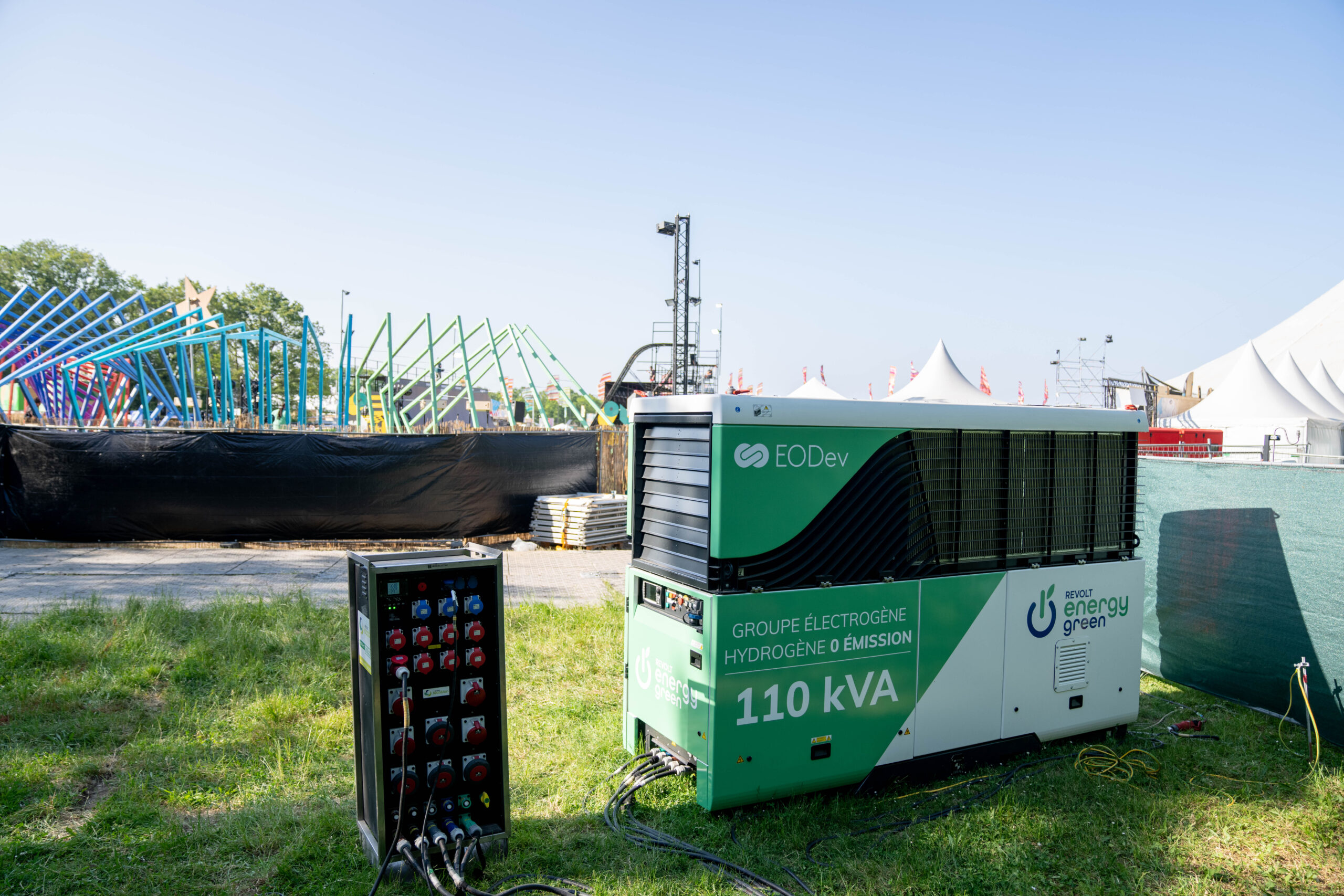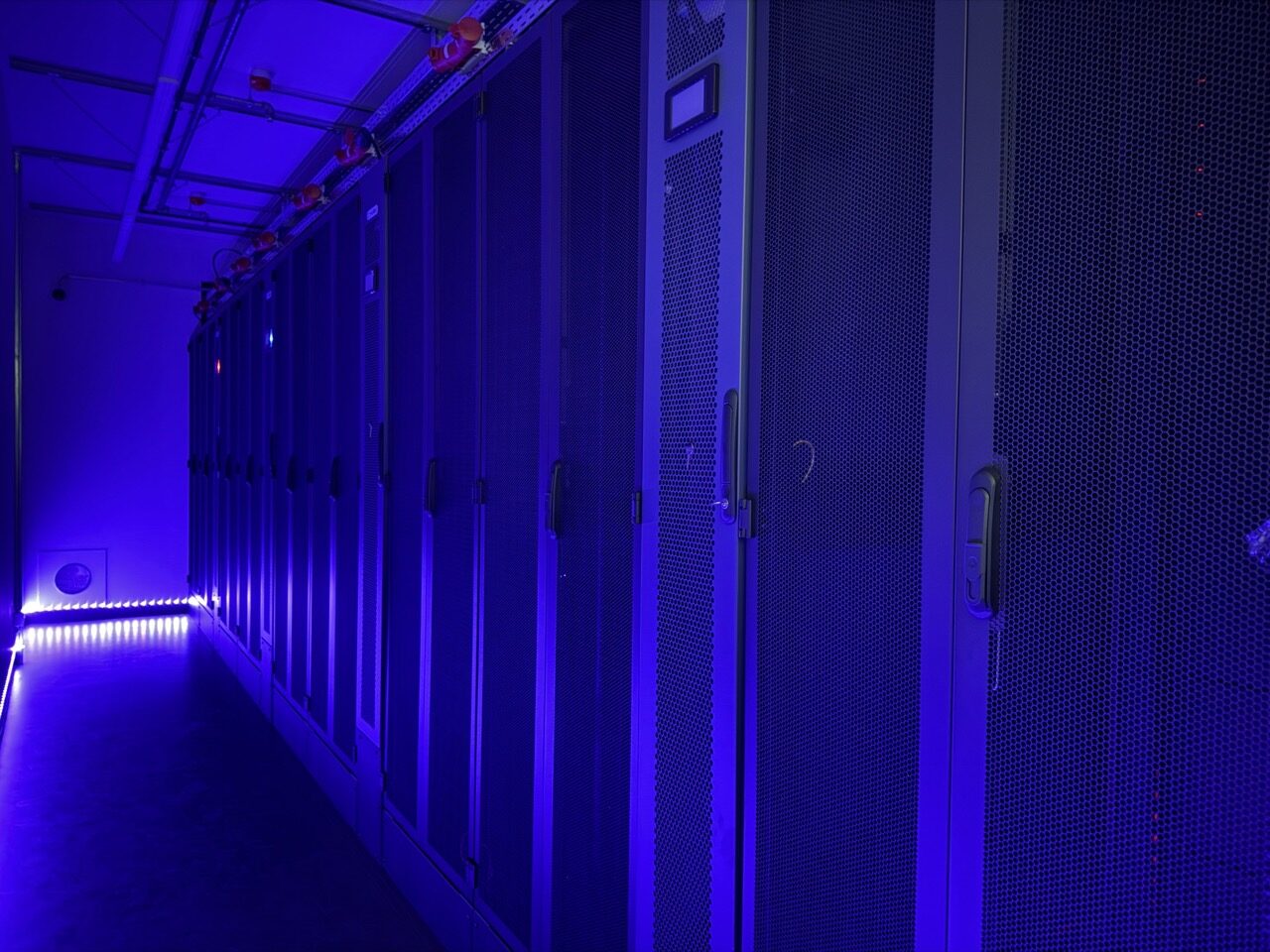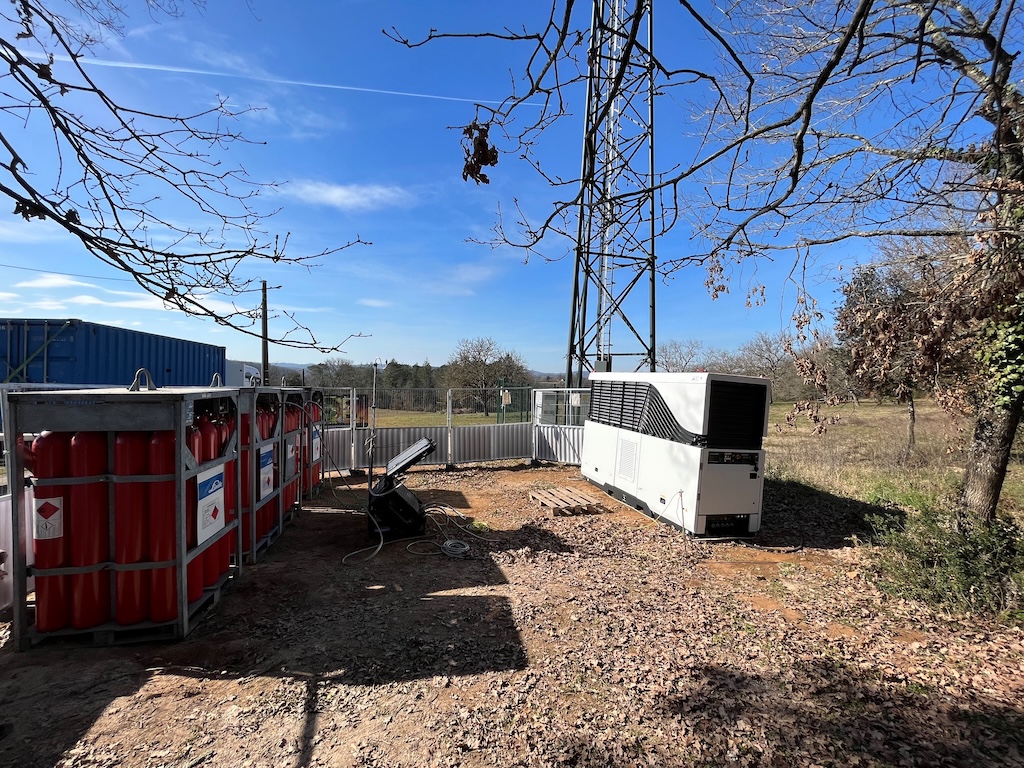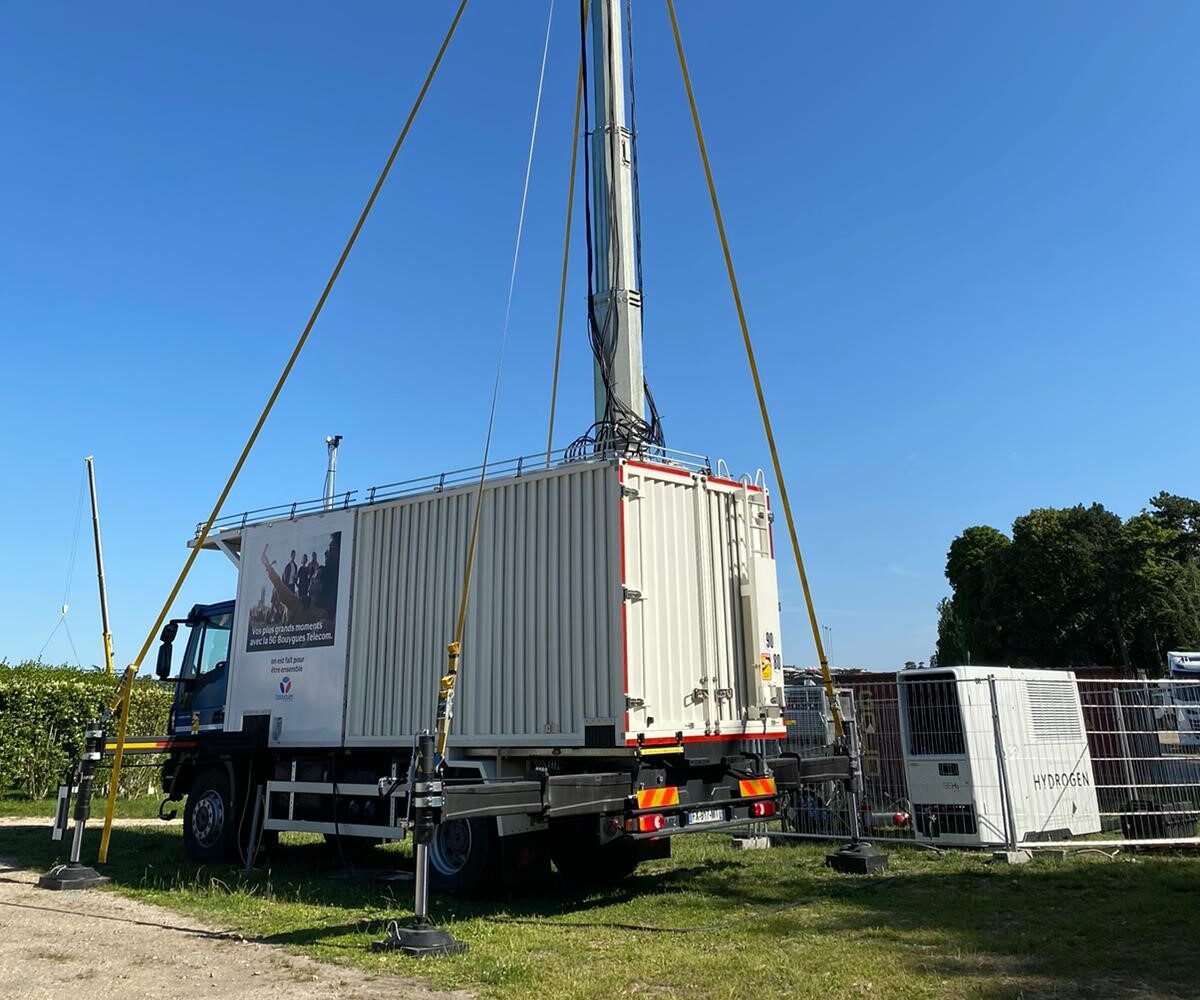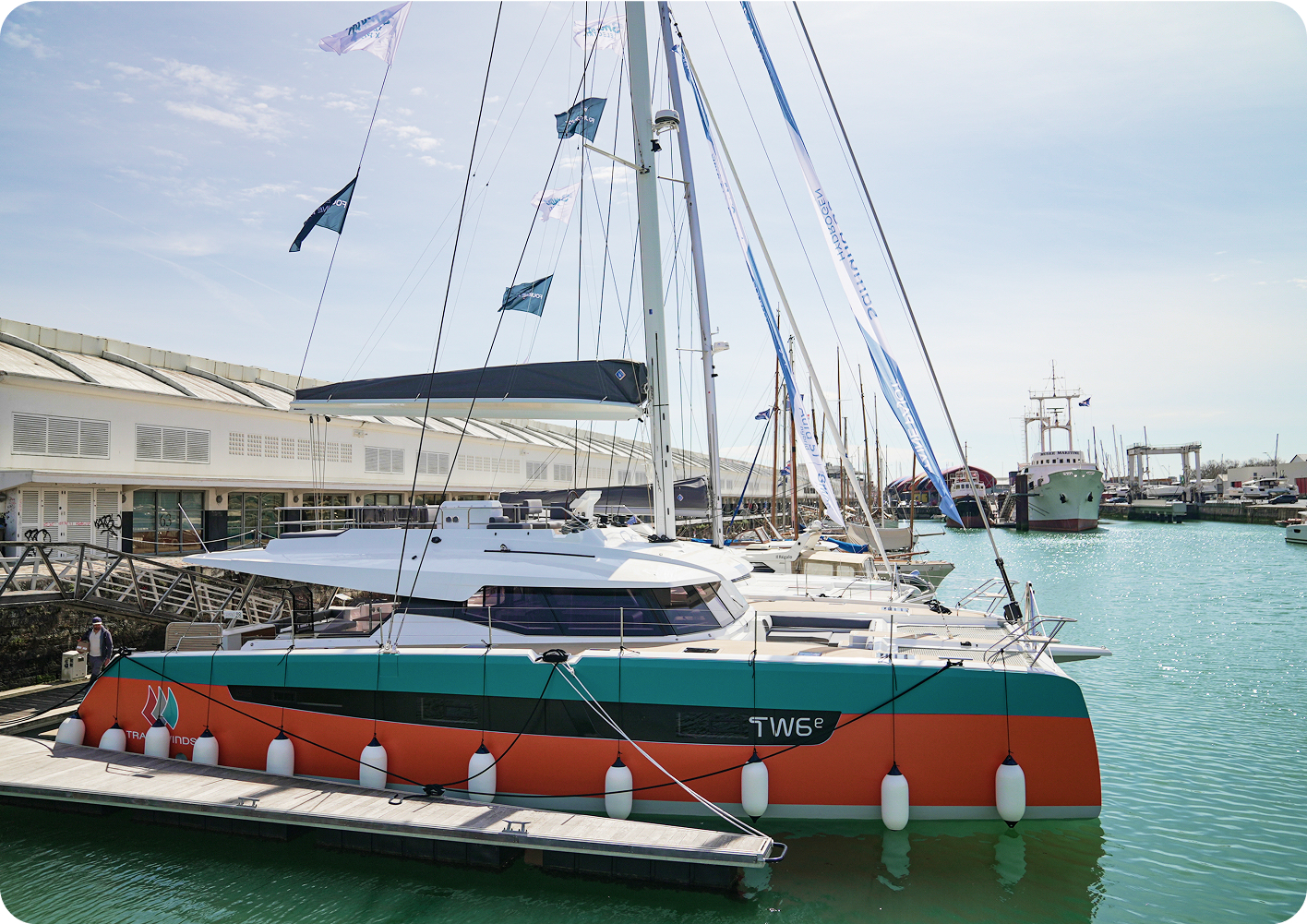4 days of operation and 1000kWh generated
Deployed to supply power to an off-grid area of the woodland, our generator provided electricity for 4 days for the whole of the Playground area, which included a stage, foodtrucks and other entertainment stands, without any disruption. Using the 60kg of hydrogen stored on site, 1000 kWH were generated.
An optimum experience for festival-goers
Silent, odourless and emission-free, the GEH₂ is unique in that it facilitates conditions of use for both users and the surrounding population. At an event such as a festival, it is all the more relevant because it does not disturb the public with unwanted noise or fumes from burning hydrocarbons.
Key Figures
1000kWh
power supply
4 days
of running
1 tonne of CO2
avoided
The fluidity of a hybrid installation
Although it runs on hydrogen, the GEH₂ is able to operate with other energy production systems, whether from the grid, a battery pack or a thermal generator. A hybrid installation was set up as part of the festival
Paralleling the genset with a battery pack
The GEH₂ alone supplies 110kVa, the equivalent of 88kW. To meet growing energy needs, it has been parallelized with a battery pack system from our partner Revolt. This hybrid installation has two advantages :
- It increases the site’s energy production capacity as required.
- Allowing the battery pack to be recharged so that it can operate autonomously
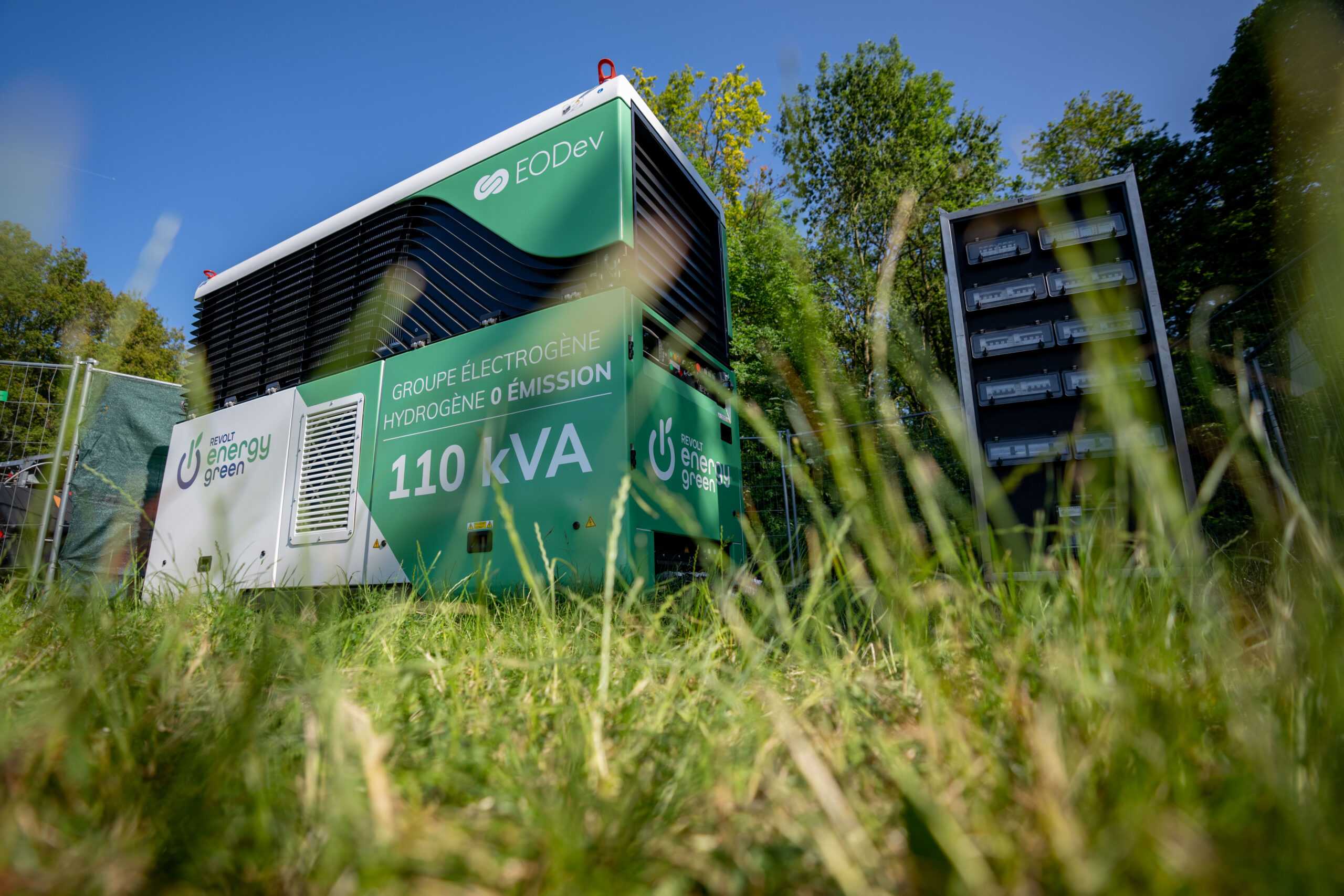
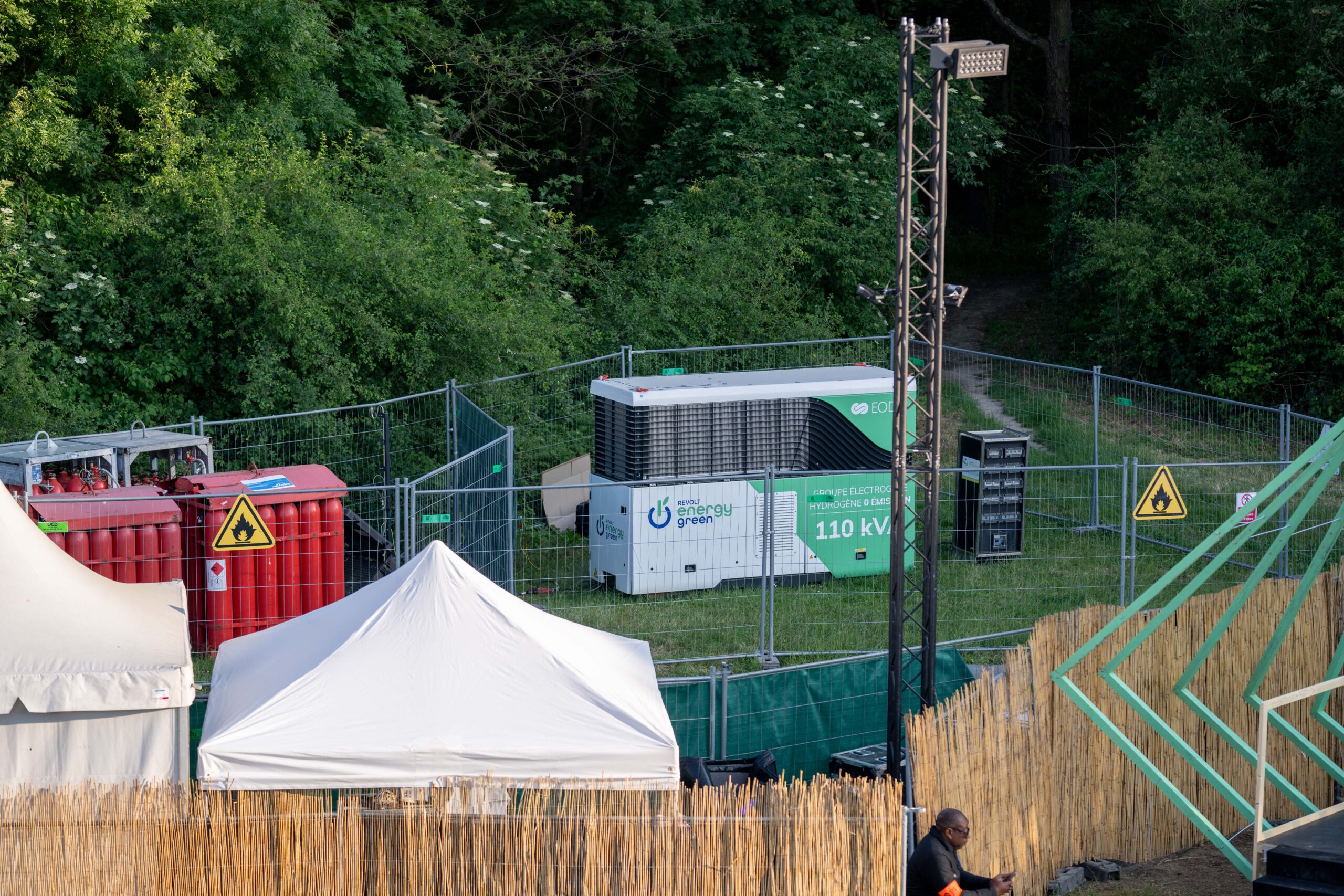
On-site supply
To meet the site’s energy needs and supply the group for 4 days, hydrogen frames were deployed. In total, four frames made up of sixteen cylinders were installed on site. Connected to an external plate to reduce the gas pressure from 200 to 11 bars when entering the unit, two frames were connected simultaneously to avoid any breakage and to facilitate replacement by a full frame once the hydrogen reserve had run out.
” The GEH₂ is completely compatible with our regulations concerning the reception of the public. All festivals could make extensive use of this type of solution and use this type of energy source..”
Nicolas Champion, Directeur Technique Festival We Love Green
Find out more about the project in this video presentation.
